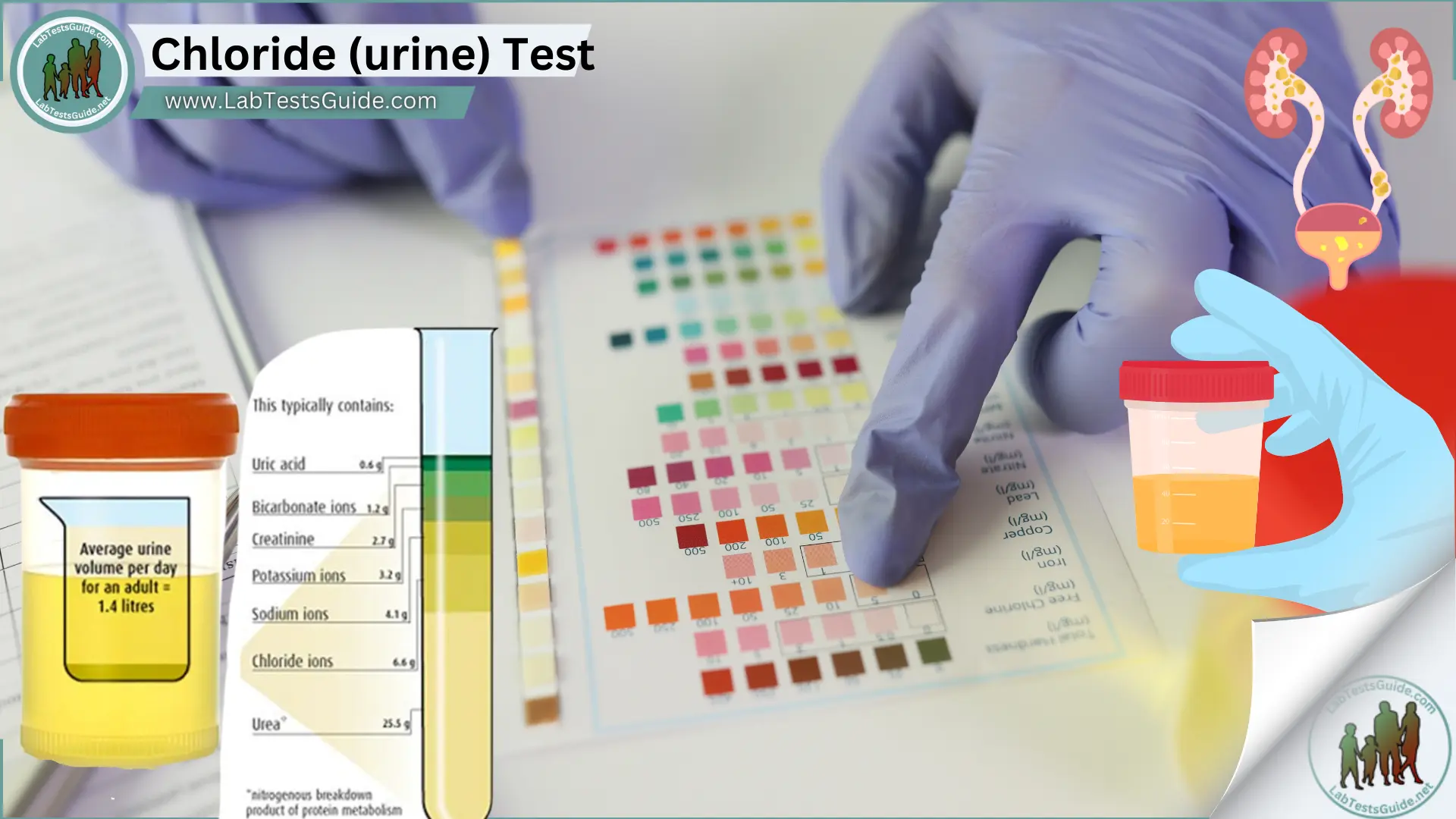A urinalysis is a test of your urine. A urinalysis is used to detect and manage a wide range of disorders, such as urinary tract infections, kidney disease and diabetes.
A urinalysis involves checking the appearance, concentration and content of urine. Abnormal urinalysis results may point to a disease or illness.

Also Known as: Chloride, Urinary Chloride, Cl, Urine Cl
Test Panel: Physical properties, Chemical Tests, Dipstick Tests, Microscopic Examination
Type of urine samples:
- Random sample:
This is a diluted urine sample and may give an inaccurate interpretation of patient health. But is best to do microscopy to evaluate WBC or RBC. - First Morning sample:
This is the best sample for microscopy and urine analysis. This is the concentrated urine because of urine remained throughout the night in the urinary bladder. This will contains an increased concentration of analytes and cellular elements. Urine must have remained in the bladder for 8 hours is considered as the first-morning sample. - Urine for sugar (Postprandial 2 hours):
Postprandial 2 hours sample collected after 2 hours of high carbohydrate diet. - Midstream clean catch urine:
This sample is needed for the culture and sensitivity of urinary infection. The patient is advised to clean the urethra, then discard the first few mL of urine. Now midstream of the urine is collected in the sterile container. - 24 Hours of a urine sample
- In this case, discard the first urine and note the time.
- Now collect urine in the container for 24 hours and put the last sample in the container.
- Refrigerate the sample.
- This 24 hours samples are needed for measuring urea, creatinine, sodium, potassium, glucose, and catecholamines.
- Suprapubic collection of the urine sample:
This is done in the patients who cannot be catheterized and the sample is needed for culture. This sample is collected by the needle. - Catheter collection of urine:
This is done by patients who are bedridden and can not urinate. - Pediatric urine sample:
In infants, special collection bags are made adherent around the urethra. Then urine is transferred to a container.
Chloride in Urine:
- Chloride is an anion (negatively charged ion) that helps in regulating the body fluid amount and acid-base balance, along with sodium, potassium, and bicarbonate
- It is found in all body fluids, but is present in higher concentrations outside of the cells
- The body gets chloride through food; excess chloride is eliminated by the kidneys via urine
- Whenever the physician suspects any disturbance in the acid-base balance, or any changes in body fluid levels or electrolytes (ions present in body fluids), or a condition called renal tubular acidosis, an Urinary Chloride Test is ordered
Why Get Tested:
You may need this test if your healthcare provider thinks you have metabolic alkalosis. Signs and symptoms include:
- Difficulty thinking
- Confusion
- Seizures
- Numbness or pins-and-needles sensation
- Muscle cramps
- Muscle stiffness
- Slow breathing
When To Get Tested?
As part of a standard electrolyte panel.
As part of a standard metabolic panel.
when your healthcare practitioner thinks that your signs and symptoms may be due to an electrolyte imbalance
Clinical Findings:
Increased level of urine chloride in:
- Dehydration
- Starvation
- Addison disease
- Consuming increased amounts of salt
Decreased level of urine chloride in:
- Cushing syndrome
- Primary aldosteronism
- Congestive heart failure
- Malabsorption syndrome
- Diarrhea
Normal Value:
- 50 to 130 meq/L
Possible References Used






